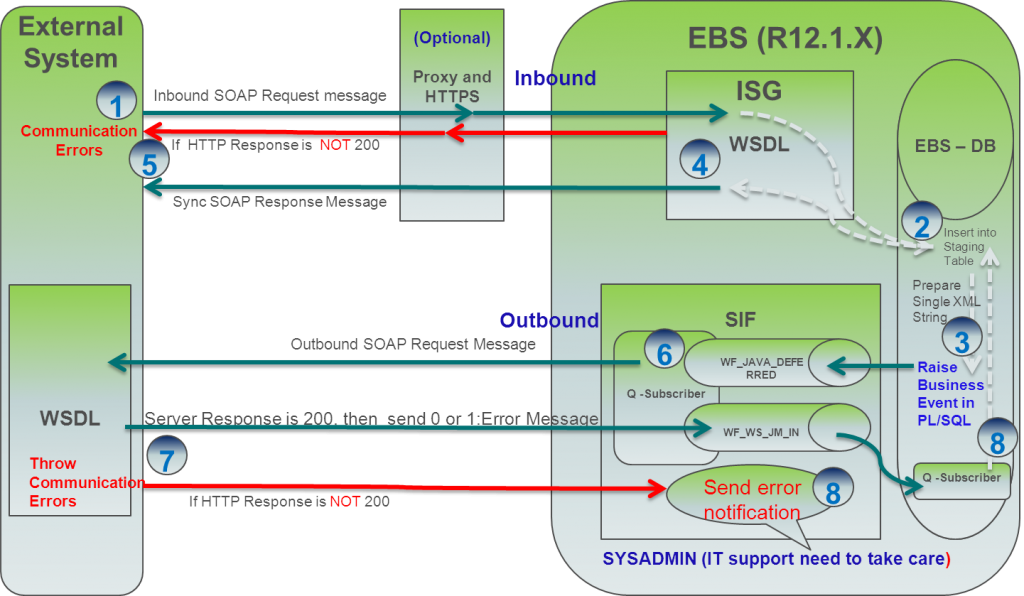Oracle E-Business Suite Integrated SOA Gateway (ISG) provides a customer-focused robust communication and integration infrastructure between an external system and ISG for inbound and outbound communication that does not require a special class of middleware software. This will not only save license costs but also reduce maintenance costs as the existing EBS system support team can maintain the infrastructure easily. This infrastructure not only enables greater and effective business integration with standard SOA concept between heterogeneous applications, but also facilitates the development and execution of complex business processes into highly flexible and reusable Web services. With this standardized and interoperable Web service platform, ISG provides a powerful framework that accelerates publishing of custom PL/SQL procedures as web services over the Web.
Integration Architecture
ISG Integrations require some configurations and customizations to enable the functionality in the ISG module. The functionality would be written in PL/SQL procedures and then enabled as a web service. The Outbound calls are made using the Service Invocation Framework (SIF) of EBS, which internally uses built-in Business Events for initiating the transaction or web service call. Organizations would not need to hire new resources to develop this functionality as Apps technical resources possessing PL/SQL skills can easily deploy this functionality. This helps the firm in saving recruitment and resource management costs. This cross-industry integration can be performed on EBS versions R12.1 and above.
Implementation Steps
Here is a detailed illustration of web services implementation and calling web services from EBS. Oracle E-Business Suite (R12.1.3) must be installed and ready to use for Integrated SOA Gateway (ISG) setup and implementation. This implementation requires some setup configuration and development of several components for Inbound and Outbound as given below:
Inbound
1. ISG Setup
a. Enable ASADMIN user
b. Create ISGUSER
2. Write a Custom PL/SQL procedure
3. Write the annotation into Procedure
4. Generate and Upload the ILDT file
5. View the Published Custom Web Service developed
6. Monitoring SOA Requests
Outbound
1. Run SQL script for Security Parameters to Support UsernameToken based WS-Security WSSE password (If the external services are WSSE enabled only)
2. Creating Business Events
3. Creating Invoke Web Service Subscriptions
4. Creating Error Notification Subscriptions
5. Creating Call back event Subscriptions in PL/SQL
6. Testing the Setup (Don’t DO in the production environments)
7. Resubmitting Failed Business Events
For further details on implementation steps e-mail to Khaleel shaik our Java Practice lead at [email protected]


